 July 29, 2021 John E. Ross, KD8IDJ, Editor
| ||||||
MARS HF Net Participants Aid in Response to Fatal Maritime Disaster On July 6, an evening Army Military Auxiliary Radio System (MARS) HF practice net in Federal Emergency Management Agency (FEMA) Region 2 (New York and New Jersey) was interrupted by several "mayday" distress calls on the channel, which is shared with the While the other net members were attempting to contact the vessel by radio, Tomo contacted the US Coast Guard (USCG) station at Jones Beach Island in New York, which alerted the USCG Sector Command at Long Island Sound to join the MARS operators on frequency. MARS operators remained on frequency to assist the USCG in listening for the distress call. Several hours later, the fishing vessel Falling Star was identified as missing with 15 individuals on board, all from Honduras. Ten days later, the USCG confirmed that 10 of the passengers survived in a skiff and were rescued by a passing commercial oil tanker -- the MTM
Amsterdam -- which spotted their small craft. Tragically, the skipper of the Falling Star died 1 day before the survivors were found, and was buried at sea. The vessel was en route from Jamaica to Guatemala when it was reported to have rolled over without warning on July 6, just before midnight. MARS volunteers alerted the USCG to the vessel in distress several hours before the Falling Star was identified and confirmed as missing. While 10 of those aboard Falling Star were rescued, five others didn't make it home after this tragic event. The Jamaica Defence Force (JFD) Coast Guard collaborated with counterparts from the US, Honduras, Nicaragua, Colombia, Cuba, and the Cayman Islands in the search for the vessel. FCC to Re-Establish Technological Advisory Council, Solicits Membership Nominations The FCC is seeking nominations for a chairperson and members of the Technological Advisory Council (TAC). In a July 21 Public Notice, the Commission announced that it intends to re-establish the TAC for 2 years by August 20, 2021. It's anticipated that the renewed panel could hold its first meeting in October. The TAC provides technical advice to the FCC and makes recommendations on the issues and questions presented to it. The panel typically has several radio amateurs among its members. Greg Among other issues, FCC Acting Chairwoman Jessica Rosenworcel will ask the TAC to start looking beyond 5G and conceptualize 6G. In addition, she'll ask the TAC to study advanced spectrum-sharing techniques, implementation of artificial intelligence, and machine learning to improve the utilization and administration of spectrum and other emerging technologies. All organizational or individual members appointed to the Council or its working groups are subject to an ethics review by the Commission's Office of General Counsel. Council members receive no compensation for their service. Nominations for membership must be submitted to the FCC by August 20. Procedures for submitting nominations are spelled out in the Public Notice, which includes details on membership qualifications and obligations. The FCC said it's particularly interested in receiving nominations and expressions of interest from individuals and organizations in these sectors:
"Members will be selected to balance the expertise and viewpoints that are necessary to effectively address the issues to be considered by the Council," the FCC said. ARRL Podcasts Schedule
The latest edition of Eclectic Tech (Episode 39) The On the Air and Eclectic Tech podcasts are sponsored by Icom. Both podcasts are available on iTunes (iOS) and Stitcher (Android), as well as on Blubrry -- On the Air | Eclectic Tech. QSO Today Offering Platform Preview The next QSO Today Virtual Ham Expo, on August 14 - 15, is offering a platform preview of the show. From 1500 UTC on August 1 through 2400 UTC on August 3, 2021, anyone can preview the expo platform at no charge. The fully functioning preview will allow prospective In addition, five speaker presentations from the last expo will be available, as well as a small exhibit area featuring fully functional booths from FlexRadio and QSO Today. Early-bird tickets for the third QSO Today Expo are $10 until August 8 and $12.50 after that. Register on the QSO Today Virtual Ham Expo website. ARRL is a QSO Today Virtual Ham Expo partner. More Slow-Scan TV Transmissions from RS0ISS Scheduled Friday and Saturday, August 6 - 7, Russian cosmonauts on board the International Space Station (ISS) will transmit slow-scan television (SSTV) images from the station on 145.800 MHz FM. They will use
SSTV mode PD-120. The transmissions are part of the Moscow Aviation Institute SSTV experiment (MAI-75) and will be sent via RS0ISS, the ham station in the Russian Zvezda (Service) module using a Kenwood TM-D710 transceiver. The announced schedule is August 6, 1050 - 1910 UTC; August 7, 0950 - 1555 UTC. Dates and times are subject to change. For stations in the ISS footprint, the RS0ISS signal should be easy to copy on a handheld transceiver and a quarter-wave whip. Use 25 kHz channel spacing, if available. Free ISS software is available to download. Pass predictions are available from AMSAT. Representative images from prior ISS SSTV events are available in the ARISS SSTV Gallery. ITU-R Working Party Considers Preliminary Studies on 23-Centimeter Band WRC-2 preparatory work for Agenda Item 9.1b continued July 5 - 13 in ITU-R Working Party 4C (WP4C), with a focus on coexistence between the 23-centimeter amateur allocation (1240 - 1300 MHz) and satellite-navigation systems. IARU member representatives from This Agenda Item is relevant to ITU Region 1 (Europe, Africa, the Middle East, and northern Asia), where one channel of the Galileo GPS system in the Radio Navigation Satellite Services (RNSS) received interference from amateur radio. Preliminary studies from France were based on the ongoing CEPT (European Conference of Postal and Telecommunications Administrations) effort to provide initial estimates of separation distances required between Galileo receivers and a sample of amateur emissions. The European Commission Galileo team provided a set of observations pertaining to an RNSS interference event in northern Italy. "The IARU is working to ensure the amateur services are realistically represented in the studies as they move forward," said Barry Lewis, G4SJH, of the IARU. "It remains vital that national amateur communities present their views on the importance of this band to their national regulators in a consolidated and consistent manner. The work will continue throughout the year and beyond both in ITU-R and in the regional telecommunications organizations, and the IARU is committed to ensure every group hears the amateur position on this important microwave band." More information is on the IARU page. -- Thanks to the IARU and Barry Lewis, G4SJH ARRL Learning Network Webinars Visit the ARRL Learning Network (a members-only benefit) to register, check on upcoming webinars, and to view previously recorded Introduction to DMR and Digital Voice -- Tim Deagan, KJ8U / Thursday, September 9, 2021 at 3:30 PM EDT (1930 UTC) An introductory overview of digital voice (DV) technologies for ham radio. This presentation will focus on DMR with notes on System Fusion, D-STAR, and more. Included will be a description of DV architecture and components, and the interesting opportunities and challenges that DV presents. ARRL members may register for upcoming presentations and view previously recorded Learning Network webinars. ARRL-affiliated radio clubs may also use the recordings as presentations for club meetings, mentoring new and current hams, and discussing amateur radio topics. The ARRL Learning Network schedule is subject to change. 8-Meter Experimental Station on the Air from the US WL2XUP is an FCC Part 5 Experimental station operated by Lin Holcomb, NI4Y, in Georgia. It's licensed to operate with up to 400 W effective radiated power (ERP) between 40.660 MHz to 40.700 MHz. John Desmond, EI7GL, reports that as of mid-July, WL2XUP was intermittently transmitting on Weak-Signal Propagation Reporter (WSPR) A 2019 Petition for Rulemaking (RM-11843) asked the FCC to create a new 8-meter amateur radio allocation on a secondary basis. The Petition suggests the new band could be centered on an industrial-scientific-medical (ISM) segment somewhere between 40.51 and 40.70 MHz. The spectrum between 40 and 41 MHz is currently allocated to the federal government and, as such, within the purview of the National Telecommunications and Information Administration (NTIA). ARRL member Michelle Bradley, KU3N, of Maryland, filed the petition on behalf of REC Networks, which she founded and described in the Petition as "a leading advocate for a citizen's access to spectrum," including amateur radio spectrum. Announcements
Amateur Radio in the News ARRL Public Information Officers, Coordinators, and many other member-volunteers help keep amateur radio and ARRL in the news.
Share any amateur radio media hits you spot with us. Amateur Radio Activities to be a Part of Missouri's State Bicentennial Celebration The Missouri First Capitol State Historic Site in St. Charles will host an amateur radio event on August 10, in association with this year's celebration of the Missouri State Bicentennial. The original capitol building on the west bank of the Missouri River served as the state's Members of the St. Charles Amateur Radio Club (SCARC) will use the special event call sign K0B at the site of the First Capitol on August 10. The First Capitol site also qualifies for the Parks on the Air program (POTA) with the identifier K-3349. Additional POTA-style activations from both the First Capitol site and from the adjacent Frontier Park are listed as "possible" on other dates, depending on weather and operator availability. K0B will be active on SSB, CW, and FT8 on 80 - 6 meters, as well as on 2-meter FM. K0B will also be active from the annual SCARC hamfest and flea market in O'Fallon on August 8 and from SCARC member stations at various times on August 7 - 15. An operating schedule will be posted on the SCARC Facebook page. Contacts will be uploaded to Logbook of The World (LoTW). A paper QSL and a downloadable PDF certificate will be available. Members of the Mid-MO Amateur Radio Club will use the special event call sign W0M August 7 - 10, and other Missouri clubs may also be active to commemorate the bicentennial. The Missouri QSO Party on July 31 - August 1 will also feature special call signs and the activation of rare counties. Typically, the event is held in April. In Brief...
The K7RA Solar Update Tad Cook, K7RA, Seattle, reports: Solar activity slowed this week. The average daily sunspot number declined from 48.9 last week to 33.9 this week (July 22 - 28). Wednesday, July 28, saw no sunspots at all. Average daily solar flux went from 81.3 to 83. Geomagnetic indicators held steady, with average daily planetary A index at 6.4 both last week and this week. Average daily middle latitude A index went from 6.4 last week to 6.3 this week.
Predicted planetary A index is 12, 8, 10, and 8 on July 29 - August 1; 5 on August 2 - 9; 12 and 10 on August 10 - 11; 5 on August 12 - 15; 10 and 8 on August 16 - 17; 5 on August 18 - 23; 12, 12, and 8 on August 24 - 26, and 5 on August 27 - September 6. KC0V reported a big 2-meter sporadic-E opening this week from DN70 in LaPorte, Colorado, to stations across the midwest, 2216 - 2235 UTC. Sunspot numbers for July 22 - 28 were 77, 46, 35, 24, 25, 25, and 0, with a mean of 33.1. The 10.7-centimeter flux was 89, 87.4 83.9, 81.6, 80.8, 79.6, and 78.8, with a mean of 83. Estimated planetary A indices were 11, 4, 4, 3, 4, 6, and 13, with a mean of 6.4. Middle latitude A index was 9, 3, 5, 5, 3, 6, and 13, with a mean of 6.3. A comprehensive K7RA Solar Update is posted Fridays on the ARRL website. For more information concerning radio propagation, visit the ARRL Technical Information Service, read "What the Numbers Mean...," and check out this Propagation Page. A propagation bulletin archive is available. For customizable propagation charts, visit the VOACAP Online for Ham Radio website. Share your reports and observations. Just Ahead in Radiosport
Upcoming ARRL Section, State, and Division Conventions Some conventions and hamfests may have been canceled or postponed due to the coronavirus pandemic. Check the calendar of canceled events on the ARRL website.
Find conventions and hamfests in your area.
ARRL -- Your One-Stop Resource for
Subscribe to...
Free of charge to ARRL members...
| ||||||
%20new.png) maritime service. Net control station Ron Tomo, KE2UK, immediately halted training and attempted (without success) to establish radio communication with the station in distress. Tomo then directed two other net members who heard the distress call -- John Hoover, K2XU, and Wayne Gearing, K2WG -- to attempt to establish communication and offer assistance.
maritime service. Net control station Ron Tomo, KE2UK, immediately halted training and attempted (without success) to establish radio communication with the station in distress. Tomo then directed two other net members who heard the distress call -- John Hoover, K2XU, and Wayne Gearing, K2WG -- to attempt to establish communication and offer assistance.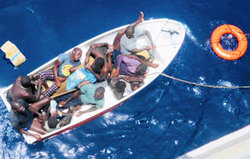
.jpg) Lapin, N9GL, has represented ARRL on the TAC.
Lapin, N9GL, has represented ARRL on the TAC..jpg) The latest episode of the On the Air podcast (Episode 19) features a discussion with ARRL Lifelong Learning Manager Kris Bickell, K1BIC, about the launch of the new ARRL Learning Center.
The latest episode of the On the Air podcast (Episode 19) features a discussion with ARRL Lifelong Learning Manager Kris Bickell, K1BIC, about the launch of the new ARRL Learning Center..jpg) begins with a chat about "rediscovering" receive audio filters. This is followed by a conversation with Bryant Julstrom, KC0ZNG, about his ac dummy load that appeared in "Hints & Hacks" in the July issue of QST.
begins with a chat about "rediscovering" receive audio filters. This is followed by a conversation with Bryant Julstrom, KC0ZNG, about his ac dummy load that appeared in "Hints & Hacks" in the July issue of QST. participants to gain comfort with the platform layout and navigation, including the virtual lobby, auditorium, exhibit hall, and meeting lounges.
participants to gain comfort with the platform layout and navigation, including the virtual lobby, auditorium, exhibit hall, and meeting lounges..jpg)
.JPG) Australia, Brazil, Canada, Germany, Japan, Norway, the
Australia, Brazil, Canada, Germany, Japan, Norway, the 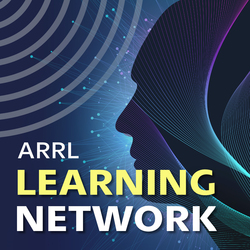 sessions.
sessions.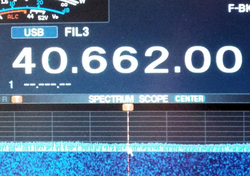 on 40.662 MHz (1500 Hz) for 2 minutes out of every 10, with an output power of 20 W ERP into an omnidirectional antenna. For FT8 check-ins and tests, an ERP of 100 W may be used. The band is affected by several propagation modes, including tropospheric ducting, sporadic E, transequatorial propagation (TEP), and F2 propagation. As Desmond notes, the 40 MHz band will open a lot earlier than 50 MHz and could be a useful resource for stations monitoring the transatlantic path.
on 40.662 MHz (1500 Hz) for 2 minutes out of every 10, with an output power of 20 W ERP into an omnidirectional antenna. For FT8 check-ins and tests, an ERP of 100 W may be used. The band is affected by several propagation modes, including tropospheric ducting, sporadic E, transequatorial propagation (TEP), and F2 propagation. As Desmond notes, the 40 MHz band will open a lot earlier than 50 MHz and could be a useful resource for stations monitoring the transatlantic path..jpg) Prominent Summits on the Air (SOTA) activator Tom Read, M1EYP, has begun a gig as a musician on board the cruise ship Spirit of Adventure. He's taken a small transceiver and a compact loop antenna and, with the skipper's enthusiastic approval, will be on the air until mid-November from the vicinity of the UK and Ireland, the Baltic, the Mediterranean, the Adriatic, and the Canary Islands on 40 - 10 meters, CW, SSB, and FT4/FT8.
Prominent Summits on the Air (SOTA) activator Tom Read, M1EYP, has begun a gig as a musician on board the cruise ship Spirit of Adventure. He's taken a small transceiver and a compact loop antenna and, with the skipper's enthusiastic approval, will be on the air until mid-November from the vicinity of the UK and Ireland, the Baltic, the Mediterranean, the Adriatic, and the Canary Islands on 40 - 10 meters, CW, SSB, and FT4/FT8.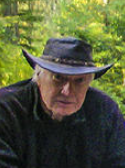 and contesting."
and contesting."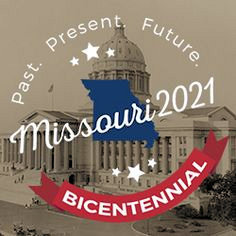 capitol from 1821 to 1826. The site is part of the St. Charles Historic District in the city's Riverfront neighborhood and is adjacent to Frontier Park, from which Lewis and Clark launched their Corps of Discovery Expedition in August 1803.
capitol from 1821 to 1826. The site is part of the St. Charles Historic District in the city's Riverfront neighborhood and is adjacent to Frontier Park, from which Lewis and Clark launched their Corps of Discovery Expedition in August 1803..JPG) The Daily DX Editor
The Daily DX Editor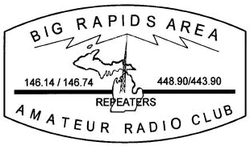 A Michigan club is considering establishing a common email address for members lacking internet access. Big Rapids Area Amateur Radio Club (
A Michigan club is considering establishing a common email address for members lacking internet access. Big Rapids Area Amateur Radio Club (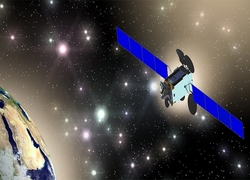 Swiss radio amateurs are facing a fee to use the QO-100 Satellite. In what might be a first, Switzerland's telecommunications regulator OFCOM is charging the equivalent of $76.25 to issue special permits to radio amateurs to use the QO-100 (Es'hail-2) amateur satellite transponders. According to a post on the website for the
Swiss radio amateurs are facing a fee to use the QO-100 Satellite. In what might be a first, Switzerland's telecommunications regulator OFCOM is charging the equivalent of $76.25 to issue special permits to radio amateurs to use the QO-100 (Es'hail-2) amateur satellite transponders. According to a post on the website for the 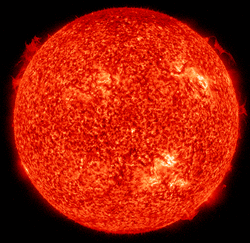 Predicted solar flux is 80 on July 29; 78 on July 30 - 31; 76 on August 1; 74 on August 2 - 3; 75 on August 4 - 12; 78, 80, 82, and 85 on August 13 - 16; 90 on August 17 - 18; 85 on August 19 - 20; 80 on August 21, and 82 on August 22 - 28.
Predicted solar flux is 80 on July 29; 78 on July 30 - 31; 76 on August 1; 74 on August 2 - 3; 75 on August 4 - 12; 78, 80, 82, and 85 on August 13 - 16; 90 on August 17 - 18; 85 on August 19 - 20; 80 on August 21, and 82 on August 22 - 28.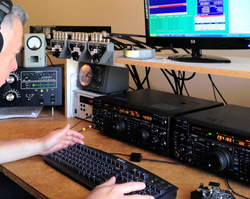 August 3 -- Worldwide Sideband Activity Contest
August 3 -- Worldwide Sideband Activity Contest.jpg)








